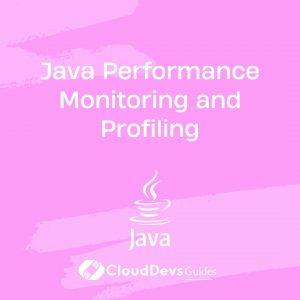Java Performance Monitoring and Profiling
In the fast-paced world of software development, ensuring optimal performance of Java applications is paramount. From start-ups to large enterprises, every developer seeks to optimize their code for efficiency and speed. This is where Java performance monitoring and profiling come into play, offering invaluable insights into application behavior and bottlenecks. In this comprehensive guide, we’ll delve into the world of Java performance monitoring and profiling, exploring its importance, tools, techniques, and real-world examples.
Why Java Performance Monitoring and Profiling Matter
Java applications are complex systems comprising multiple components interacting with each other. Identifying performance bottlenecks and optimizing code can significantly enhance user experience, reduce resource utilization, and ultimately save costs. Performance monitoring involves continuously tracking various metrics such as CPU usage, memory consumption, response times, and throughput to identify deviations from expected behavior. Profiling, on the other hand, involves analyzing code execution to pinpoint performance bottlenecks and resource-intensive operations.
Tools for Java Performance Monitoring and Profiling
VisualVM
An essential tool in every Java developer’s arsenal, VisualVM provides real-time monitoring and profiling capabilities. With its intuitive interface, developers can monitor CPU, memory, and thread usage, analyze heap dumps, and profile application performance with minimal overhead.
JProfiler
Offering deep insights into Java applications, JProfiler enables developers to identify performance bottlenecks, memory leaks, and threading issues. Its advanced profiling capabilities, including CPU profiling, memory profiling, and JDBC profiling, make it a popular choice among Java developers.
New Relic
A cloud-based application performance monitoring solution, New Relic offers end-to-end visibility into Java applications. With its real-time monitoring and alerting features, developers can proactively identify and resolve performance issues before they impact users.
Techniques for Java Performance Optimization
Code Profiling
Start by profiling your Java application to identify performance bottlenecks. Use tools like VisualVM or JProfiler to analyze CPU usage, memory allocation, and method execution times. Focus on optimizing the most resource-intensive parts of your code.
Memory Management
Efficient memory management is critical for Java performance. Minimize object creation, avoid unnecessary object references, and use data structures wisely to reduce memory overhead. Consider tuning JVM parameters such as heap size and garbage collection settings for optimal performance.
Concurrency Optimization
Leverage Java’s concurrency features to improve performance in multi-threaded applications. Use thread pools, asynchronous programming, and synchronized blocks judiciously to minimize contention and maximize throughput.
Real-World Examples
Optimizing Database Access
In a Java web application, inefficient database access can significantly impact performance. By profiling database queries and optimizing their execution, a development team at XYZ Company was able to reduce response times by 30% and improve overall application performance.
Reducing Memory Footprint
At ABC Corporation, developers optimized their Java microservices architecture by minimizing object creation and optimizing data structures. As a result, they achieved a 50% reduction in memory footprint and improved application scalability.
Scaling Microservices
In a high-traffic e-commerce platform, Java microservices play a crucial role in handling user requests. By implementing efficient caching strategies and optimizing service communication, the engineering team at DEF Inc. was able to scale their microservices architecture to handle millions of concurrent users without compromising performance.
Conclusion
Java performance monitoring and profiling are indispensable tools for ensuring optimal performance and scalability of Java applications. By leveraging the right tools, techniques, and real-world examples, developers can unlock the secrets to achieving optimal code performance and outperforming the competition.
External Links for Further Reading
Table of Contents









